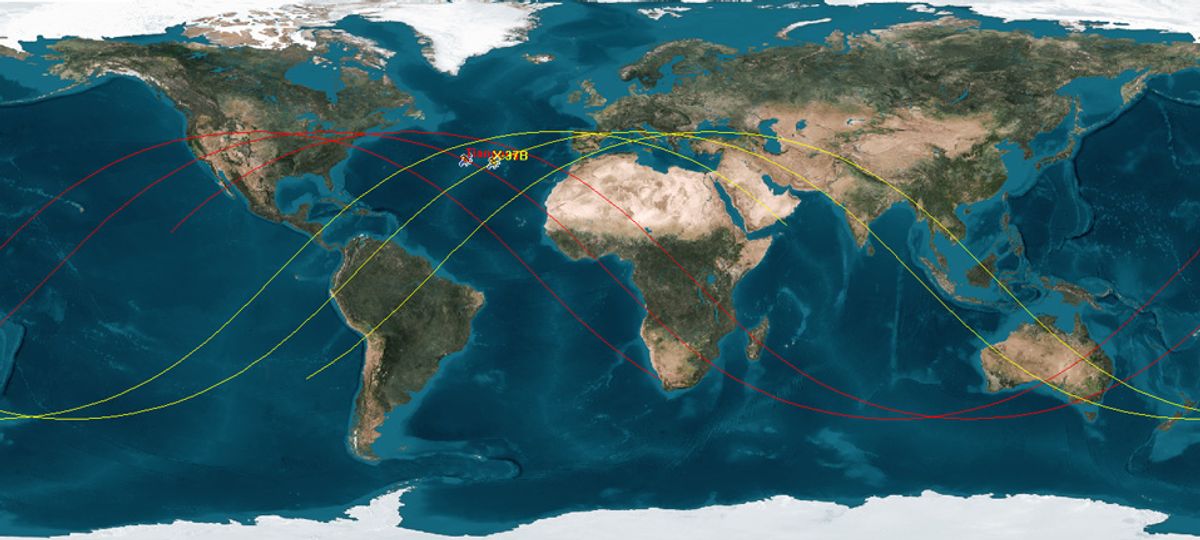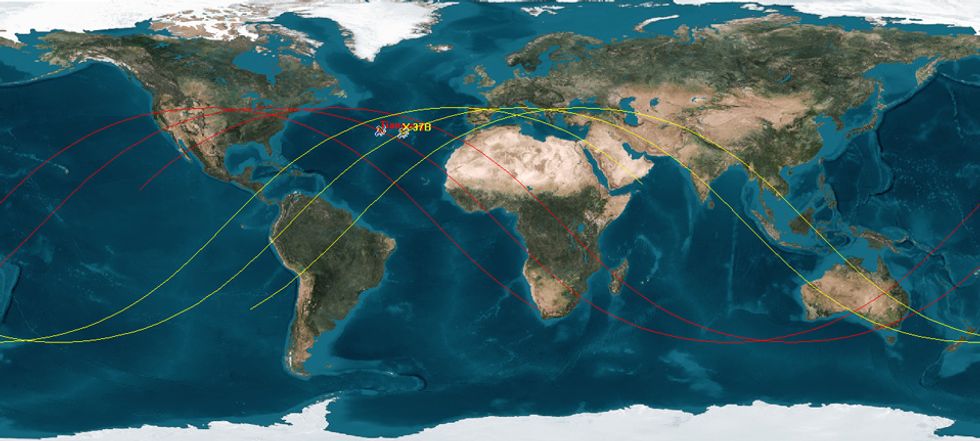A horrendous error appears to have been made by a well-respected British spaceflight society, which reportedly is about to publish an article claiming that the X-37B, the secret Pentagon space plane, is shadowing the recently launched Chinese prototype space station, Tiangong-1, to spy on it in flight.
But that’s ridiculous. The American plane’s orbit is at a steep angle with respect to that of the Chinese space station. When the two vehicles pass, they do so at speeds of up to 8000 meters per second, making it practically impossible for one to gather intelligence on the other.
Both orbits are tilted to the equator at about the same amount, 43 degrees, and both fly about 300 kilometers high. But that is as far as the resemblance goes. According to a BBC account of the article, to be published this weekend in the 55-year-old journal Spaceflight, the author and all the editorial reviewers forgot one additional parameter that you need to specify relationships between orbits. This is the point on the equator where the orbit begins its pass over the northern hemisphere: in technical terms, the RAAN.
That information is readily available for the X-37B and Tiangong-1, and it show the two satellites are orbiting in nearly perpendicular planes. The difference in RAAN is about 95 degrees, and combined with their orbital inclinations, spherical trigonometry shows the two planes are tilted 60 degrees apart.
Although the article reportedly cites amateur space trackers as the source of the orbital data, the opposite is true. On their discussion board, these trackers are debunking the article’s claims. In a comment posted this morning, senior observer Bob Christy wrote: "The story … totally ignores the RAAN issue. Unfortunately it was taken at face value by BBC News, and that is how it spread.”
It gets even worse. The X-37B went up months before the Tiangong, so to get it into an orbit that tracked the Chinese vehicle’s steps the U.S. Air Force would have to have known exactly which orbit the Chinese had selected and the day and time the launch would occur. Even if the Air Force had known the plans, it would have been to no avail had weather delayed the launch by a day—or even by half an hour. That’s preposterous on the face of it.
How could Spaceflight, the magazine of the respected British Interplanetary Society, have made such a mistake? The society was long known as a band of spaceflight enthusiasts who have come up with startlingly prescient designs of spacesuits, lunar orbit rendezvous, Soviet space radio eavesdropping, and starships.
Could it be that the once-staid organization has gone all Fleet Street on us?
In the same post, Christy noted that “the BIS has openly stated in an e-mail to all members that it intends to raise ‘controversial issues’ in order to increase membership [JO: currently about 3000 worldwide], and hence income."
I didn’t get that email, or the earlier announcement that BIS was sponsoring a seminar in London in April to discuss whether the Apollo moon landings were authentic or a hoax. That’s because last year I let my membership of 40 years lapse. The expense had outstripped the value to me.
IMAGE: Jason Silverman
Read more by James Oberg here
James Oberg is a retired "rocket scientist" in Texas, after a 20+ year career in NASA Mission Control and subsequently an on-air space consultant for ABC News and then NBC News. The author of a dozen books and hundreds of magazine articles on the past, present, and potential future of space exploration, he has reported from space launch and operations centers across the United States and Russia and North Korea.




